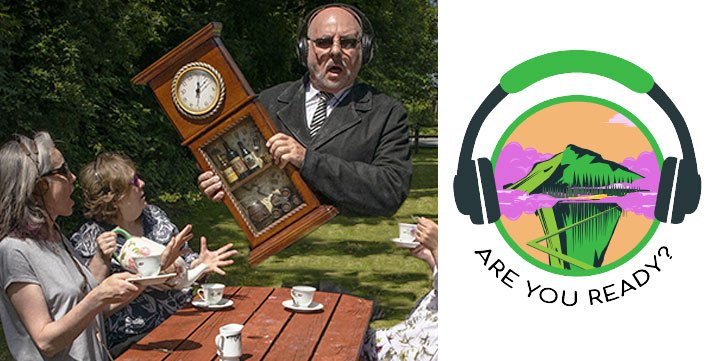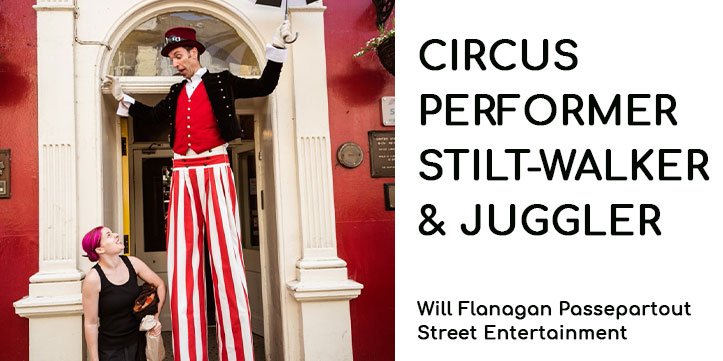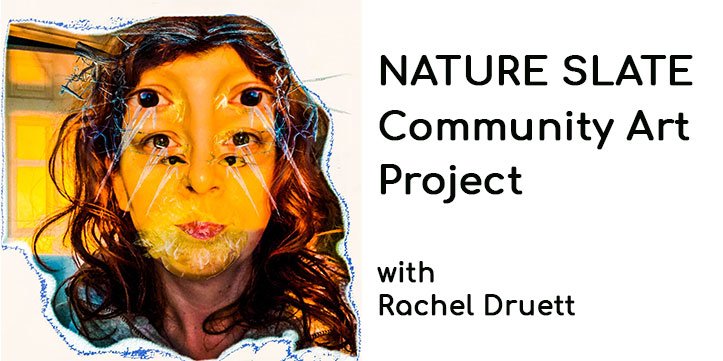Bruce Copeland
On a sweltering Saturday early in May 1957, calves fed, firewood chopped, eggs collected, vegetables and flowers watered and other morning chores completed, Mother got into preparing lunch. As I left to go out to the hens with vegetable peelings, my brother Johnny charged in pushing me to one side, yelling:
‘Ma where is JH? There is a buzzing dark cloud!’
‘Johnny lad, you mean your daddy!’ replied Ma. ‘It is ok for granddad to abbreviate, but it is always Daddy and nothing else to you, and don’t you ever forget it!’
Daddy then appeared and called out ‘D, please go fetch a sheet and quickly! A swarm is landing in the old pear tree.’ Our neighbour Jimmy and I followed the black buzzing cloud from his big field to our orchard. There must be at least thirty thousand bees. Jimmy said it was the finest swarm he had ever seen. Handing the sheet to daddy my mother joked ‘You know John the saying – a swarm of bees in May is worth a cock of hay. This swarm could be worth two cocks of hay, one for us and one for Jimmy.’
The arrival of the bees and subsequent activity almost sixty-five years ago was an unforgettable event. For several seconds in the near darkness that morning, it seemed night time had arrived.
In the 1950’s my mother’s father was one of few who referred to the little black native Irish bee (Apis Mellifera Mellifera) as A.M.M. Grandfather was a studious reader. He frequently quoted mind tingling facts and abbreviated names for almost everything. He referred to Father as JH, mother as D and my older brother Johnny was JR. Granddad and father often debated politics, farming and nature topics.
My father had been left little choice but to take over the running of the family farm at the age of fourteen. In his struggle to survive those years, he was mentored by our neighbouring farmer Jimmy. Several years older than Father, Jimmy had imparted his experience of beekeeping and carpentry skills to my father. Most of the older beekeepers I know are handy carpenters, but unfortunately these essential skills I have not perfected.
‘Swarming bees don’t usually sting,’ Mother whispered, but she still held Johnny and me back. We watched Daddy and Jimmy shaking the great beard of bees down into the sheet. The calm way they gently managed the swarm from the high up, almost breaking and bending branch, and then into the hive without suit or glove protection seemed nature loving magical. At the age of five I was instantly hooked to someday becoming a beekeeper. While I walked the Camino a few years ago, I observed the harvesting of olives. One olive-picker shook the tree and a second person secured the ground sheet so that nothing escaped. It reminded me of Daddy and Jimmy and the bees, all those years ago.
I went into self-employed business in my mid-twenties. It meant moving around and great demands on my time. I was rarely far from nature but I did not get the chance to become a beekeeper. It was not until my fifties that the beekeeping ambition could actively germinate. Liam, a neighbour in the village of Ballycanew, acquired a few bee hives. We kept in contact and talked about progress with his bees. Within a short few years Liam had successfully built up hive numbers.
I moved to live in Tinahely. For the first time, I had acquired sufficient garden space as well as the time to explore beekeeping. Liam inspired me and my neighbours did not object to the idea of bees next door. I followed Liam into Gorey Beekeepers and the Federation of Irish Beekeepers Association. Experienced people in Gorey including Gerard and Ben, encouraged me greatly. I learned of Michael who kept bees and lived in Tinahely. I looked Michael up and soon acquired an expert mentor, a true friend and a lover of little black bees. We attended the Gormanston Bee School in summer 2015, making contacts and learning much. Motivated by publicity about the dangers facing the little black bee, I joined the Native Irish Honey Bee Society. During the Covid lockdown I signed into online bee webinars, which I continue to do. I am lucky to have in my family an expert carpenter, Paul, to make my beehives and stands. The measurements and making of beehives require careful bee space precision.
It is reputed the native Irish bee was first introduced by Saint Molaga in the sixth century to beehive ways of living. Lann Beachaire (the church of the beekeeper) had been erected by Saint Molaga close to Balbriggan. Clearly the little black bee has survived much. It can surprise but by nature, when handled gently, it is placid to work with. It has an almost hypnotic dance communication system. Each bee within the organised group has a defined function with few things getting left to chance. The queen does the egg laying. Nurse, worker and guard bees all play specific roles. The only males in the hive, the drones, mate the queen and when this function is completed, they immediately die.
Ireland is the only country where this little black bee still thrives nationwide. It has evolved and adapted and is the best-suited honey bee to Irish weather conditions and food sources. The importation of non-native bees is a serious threat to the survival of Apis Mellifera Mellifera. Because of this, on June 2nd 2022, the ‘Protection of the Native Irish Honey Bee Bill 2021’, introduced by Vincent P. Martin, reached second stage at Seanad Éireann. As a toddler in Granny’s fruit and vegetable garden, I never contemplated that the hard-working little black Irish bee would, in my lifetime, require laws to protect its very existence.
BRUCE COPELAND lives in Tinahely where he is a member of the Courthouse Writers’ Group, the Tinahely Bowls Club, the Men’s Shed and the Walking Club. As well as participating in many sports clubs, he is a member of Gorey Beekeepers. A keen gardener, he has a special interest in Nature and Travel.
Read more sustaining stories
The Dubs ( by: Bernie Walsh )
Munch ( by: Bernadette Colfer )
The Precious Little Black Honey Bee (by: Bruce Copeland)
The Gooseberry Bush (by: Rona Fleming)
Zaventem (by: Joy Redmond)
The Longest Journey (by Patrick O’Neill)
I Can Fly (by Jacinta Hayes)
The Marquee (by Kieran Tyrrell)
Ten Minutes (by Jacinta McGovern)
The Turkey is in the Post (by Lucy Nolan)










